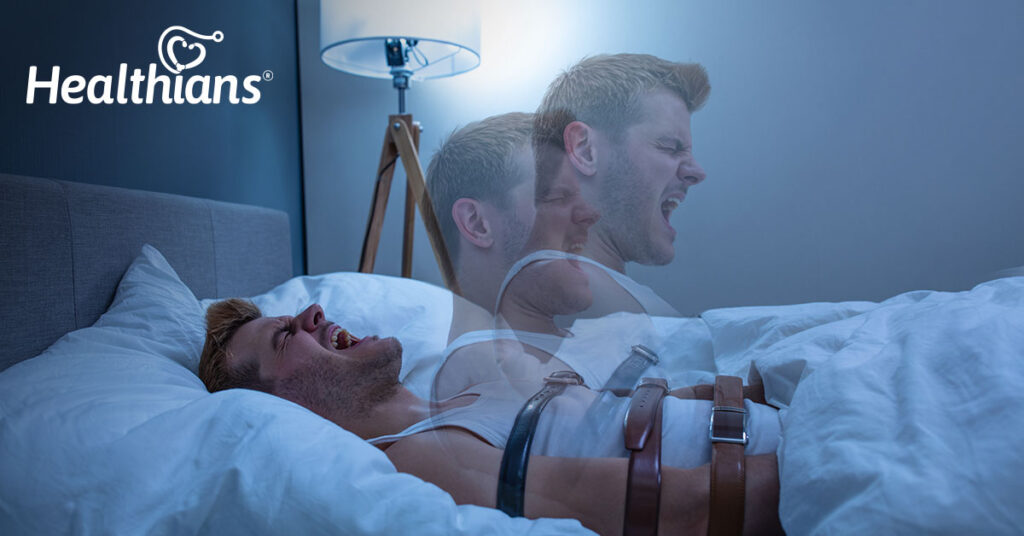Sleep paralysis is a phenomenon that has puzzled people for centuries. It is a condition where a person is unable to move their body or speak while falling asleep or waking up. This can be a terrifying experience, as the person may feel suffocating or being held down by an unseen force. Sleep paralysis can be accompanied by vivid hallucinations or feelings of dread, leading many to believe they are experiencing a supernatural or otherworldly event.
It is a common experience that is estimated to affect up to 8% of the population.
In this blog post, we will explore the causes, symptoms, and treatments of sleep paralysis, as well as the cultural and historical significance of this strange and often unsettling phenomenon.
.
Who develops sleep paralysis?
While anyone can experience sleep paralysis, certain factors may increase the likelihood of developing it. These include:
- Sleep deprivation or irregular sleep patterns
- Changes in sleep schedule or sleeping in unfamiliar surroundings
- Stress, anxiety, or other mental health conditions
- Substance abuse or withdrawal
- Certain medications or medical conditions, such as narcolepsy or sleep apnea.
Overall, sleep paralysis is not a disorder in itself, but rather a symptom that may be associated with various underlying factors.
How is sleep paralysis diagnosed?
Sleep paralysis is typically diagnosed based on a person’s symptoms and medical history. A doctor may also conduct a physical exam and order tests to rule out other possible causes of the symptoms.
During a physical exam, the doctor may ask about the person’s sleep habits, including how much sleep they get, how often they wake up during the night, and how easily they fall asleep. The doctor may also ask about any other symptoms the person is experiencing, such as hallucinations or feelings of anxiety.
If the doctor suspects sleep paralysis, they may refer the person to a sleep specialist for further evaluation. The sleep specialist may conduct a sleep study, which involves monitoring the person’s brain waves, heart rate, breathing, and muscle activity while they sleep. This can help to confirm a diagnosis of sleep paralysis and rule out other sleep disorders.
In some cases, a doctor may also order additional tests, such as blood tests or imaging studies, to rule out other medical conditions that may be causing the person’s symptoms.
Overall, the diagnosis of sleep paralysis is typically based on a combination of a person’s symptoms, medical history, and diagnostic tests.
How is sleep paralysis treated?
Sleep paralysis is when a person experiences a temporary inability to move or speak when falling asleep or waking up. It is a relatively common phenomenon that affects around 7.6% of the general population. Here are some ways to treat sleep paralysis:
- Improving sleep hygiene: Practicing good sleep habits such as a regular sleep schedule, reducing caffeine and alcohol consumption, and limiting screen time before bed can improve sleep quality and reduce the likelihood of experiencing sleep paralysis.
- Treating underlying medical conditions: Addressing underlying medical conditions such as sleep apnea, narcolepsy, and anxiety disorders that may contribute to sleep paralysis, can help alleviate symptoms.
- Cognitive Behavioral Therapy (CBT): CBT can be used to help change negative thought patterns and behaviours associated with sleep paralysis. It can also help reduce anxiety and stress that may contribute to the condition.
- Medication: In some cases, medication may be prescribed to help manage symptoms of sleep paralysis. For example, antidepressants may be used to help regulate sleep patterns, and benzodiazepines may be prescribed to reduce anxiety.
- Improving sleep position: Sleeping on one’s side instead of the back may help reduce the occurrence of sleep paralysis.
It is important to note that sleep paralysis is not a serious medical condition and does not require treatment in most cases. However, if it is causing significant distress or affecting daily life, seeking help from a healthcare professional may be beneficial.





